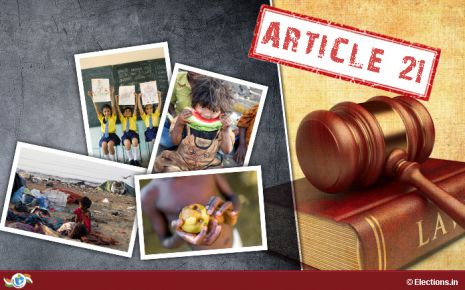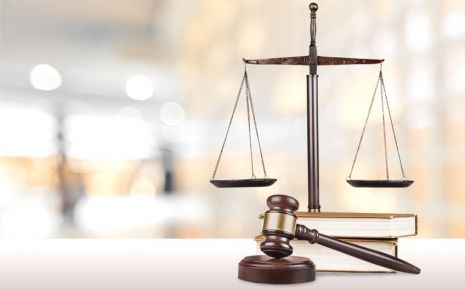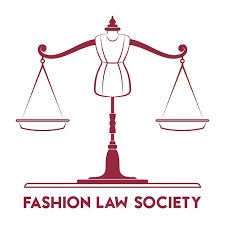Privy Council: History and Developments
Privy Council
A privy council is a body that advises the head of state of a nation, typically, but not always, in the context of a monarchic government. The word "privy" means "private" or "secret"; thus, a privy council was originally a committee of the monarch's closest advisors to give confidential advice on state affairs.�[1]The authority of the Privy Council over the Indian subcontinent developed in patches that stretched unevenly inland from coastal locations, mirroring the process by which the East India Corporation, established in 1600, gradually acquired political power in the region. This process resulted in "India" as such not forming a jurisdiction until India and Pakistan emerged as independent countries in 1947. Rather, the courts hearing appeals from the Privy Council were provincial courts and appealed themselves from far-off subcontinental lands.
The earliest appeals from India to the Privy Council were not appeals against any court's decision, but petitions to the English Crown for alleged oppression by officials of the East India Company. The earliest plea to the Privy Council from a court in India was in 1679. (Fraas)
Post 1726: Mayor's Court
In 1726, in the Charters of the Mayor's Courts, established in the port cities of Bombay, Madras and Calcutta, earliest formal provisions for appeals to the Privy Council from courts located in India were provided. In fact, Bombay was Crown territory (acquired from the Portuguese as royal dowry) transferred to the Company, while the settlements in Madras and Calcutta grew around the Company's trading stations and on lands leased from Indian rulers.These courts' jurisdiction was limited to the city in which they were located and British subjects. In 1753, explicit legislation provided for Indians not to be subject to their jurisdiction unless they chose to be. Nevertheless, Indians provided much of the business for these courts and scientists speculated on the grounds.
As some of the possible reasons, the lack of alternative tribunals in the area, the lure of a winner-take-all form of justice and the active forum shopping by disadvantaged litigants in other courts were proposed. The records of the Mayors' Courts provide insights into the restless commercial networks stretching from Britain to the Arabian and Persian coasts of India to South East Asia, the ad hoc and disputed forms of local authority exercised by the Company's officials, and the Jewish, Armenian, British and Indian merchants, agents and their families jostling alongside. (Chatterjee, 2011)
POST-1773: SUPREME COURTS AND SADR NIZAMAT/SADR DIWANI ADALATS
The British Parliament became more concerned with its activities when the East India Company gained formal political power over major areas in eastern India (Bengal, Bihar, and Orissa).
The acts included the appointment, by a Standing Parliamentary Committee (the Board of Control) of the first governor general of India, Warren Hastings, and the establishing, at first in the state of Calcutta and then in Mumbai in 1823 and Madras in 1982, and the establishment of the Supreme Courts, composed of fully trained barrister juges from Great Britain. (Mukherjee, 2010)
The consequence of these reforms was the emergence, in the cities in which they were situated as well as in British subjects, of a peculiar divorced legal system-whereby the Supreme Courts of Calcutta , Bombay and Madras, like the Mayor's Court, were repeatedly overthrown by the English rule. (Metcalf, 2006)
The courts outside the main towns, on the other hand, were known as 'business courts' and were called Adalat (justice) after the Indo-Persian word. They were divided into the Adalats Diwani (income and civics) and the Adalats Nizamat (criminal). They have a variety of rules, including modified variants of Hindu and Islamic law, and they have been governed by officers of Companies with little to no legal experience and assisted by Indian lawyers. The Privy Council appealed, on the one hand, from the Supreme Court and, on the other, from the Provincial High Courts (Sadr Nizamat Adalats) and Sadr Diwani Adalats. (Benton, 1999)
Post 1862: The High Courts
This confusion, with many overlaps and differences, persisted until these two court systems were amalgamate, the existing courts were abolished and the provinces of Calcutta, Mumbai and Madras were established in 1862. Subsequently, other high courts were set up which are all listed in "India" when you use the catalogue search function on this website. The civil and criminal powers of all provincial high courts and the appeals rested on the Privy Council's Judicial Committee.Of these, the High Court in Bombay had a particularly large and complex jurisdiction from the west shore of India to Zanzibar Island in East Africa and to Aden and Bahrain in the Persian Gulf jurisdictions. The development and growth of the High Courts was matched by the growth of the Indian bar and bench in the Indian subcontinent. In the nationalist moves of India and Pakistan, many such judges and lawyers played a leading role. For more essays on this website relating to the growth of the practice of law in the British Empire, please refer to this article.
A final court of appeal within the territorial boundaries of India was requested in India in the 1930s. Though the Government of India Act of 1935 established the Federal Court of India, its jurisdiction was largely restricted and restricted to constitutional matters. It was only in 1948, more than a year after the independence of India, that its competence had increased significantly. The Supreme Court of India succeeded the Federal Court in 1950. India abolished calls to the Privy Council in 1949. (Chatterjee D. N.)
Appeals From Courts In India To The Privy Council
Charters Of 1726 And 1753:
In Indian Legal History, the 1726 Charter granted Privy Council the right to appeal from the Indian Courts. Three Mayor's Tribunals in Calcutta, Madras and Bombay were set up in that Charter. The provision was made concerning the first appeal to the Governor-in-Council in the respective provinces from the rulings of the Mayor's Court and the second appeal to the Privy Council in England. Whereas the 1757 Charter which re-established the Courts of the Mayor reaffirmed the said provisions of the Court of Mayor's Appeal to Privy Council.
The Regulating Act, 1773:
This Act empowered the Crown to issue a Supreme Court Charter at Calcutta for establishment. Thus, the Crown issued the Charter of 1774 to create a Supreme Court in Calcutta, and it abolished the respective Court of Mayor. Section 30 of this Charter provided the right to appeal to the Privy Council in civil matters from the judgments of the Supreme Court, if two requirements were met:
- Where the amount involved exceed 1000 pagodas.
- Where the appeal is filled within six months from the date of decision.
Similarly, the 1797 Act replaced the Court of Mayors at Madras and Bombay with the Court of Recorders and provided direct appeals to the Privy Council from these courts. Thus, the right of appeal to Privy Council from King's Court was well recognized. Besides this, there was the Court of Business, i.e. Sadar Adalat Diwani, and Sadar Nizamat Adalat. They also acknowledged the right to appeal their decisions to the Privy Council. According to the Settlements Act of 1781, the right to appeal in civil matters from Sadar Diwani Adalat at Calcutta was provided for.
Appeals To Privy Council From High Courts:
The high courts were established in three provinces in 1861 under the Indian High Courts Act, 1861. It was the amalgamation of the Courts of King and the Courts of Business. This Act provided for the right to appeal from any of its decisions to the Privy Council from High Courts except in criminal matters. In addition to this, there was a provision of Special leave to Appeal in certain cases to be so certified by the High Courts. The Charter of the High Court also made it the supreme and final court of appeal in all cases, civil and criminal, decided by inferior courts, except such as possessed the requisite importance, pecuniary or legal, demanding a further appeal to the Judicial Committee of the Privy Council.
Appeals From Federal Court In India To Privy Council:
The 1935 Government of India Act provided for the creation of a Federal Court in India. The Federal Court was granted original exclusive jurisdiction to decide disputes between the Center and the constituent Units. The provision was made for the filing of appeals from the High Courts to the Federal Court and the Privy Council from the Federal Court. The Federal Court also had jurisdiction to grant Special Leave to Appeal, and a High Court certificate was essential for such appeals.
The procedure of lodging appeals with the Privy Council and of their being decided, was modified several times, most importantly in 1833. From the discussion above it is apparent that the Privy Council has made a valuable contribution to the development of the Indian judiciary and legal system. In the Indian legal system, it implemented several fundamental concepts of law. The courts of India were formed. In general, its role in improving the legal system in India as it currently exists is very critical.
By looking at the history of the Indian Legal System, the Indian Legal System is founded on the English Legal System. Indeed, during the English regime itself there was a systematic development of Indian judicial institutions, judicial principles, laws, etc. Furthermore, a hierarchical judicial system was developed in India in the British regime. Consequently, a body of lawyers popularly known as the 'Privy Council' was granted the highest judicial authority. In shaping the current legal system in India, it has played an important role.
Works Cited:
- Benton, L. (1999). �Colonial law and cultural difference: jurisdictional politics and the formation of the colonial state', Comparative Studies in Society and History (3rd ed., Vol. Vol. 41).
- Chatterjee, D. N. (n.d.). Privy Council Papers. India.
- Chatterjee, N. (2011). The making of Indian secularism: empire, law and Christianity, 1830-1950. Palgrave.
- Dhanokar, P. (n.d.). If we overview the history of Indian Legal System, it clearly reveals that the Indian Legal System is more or less based on the English Legal System.. Privy Council.
- Fraas, M. (n.d.). �The First Fifty Appeals from East India Company Territories to the Privy Council 1679-1774
- Metcalf, B. M. (2006). A concise history of modern India . Cambridge.
- Mukherjee, M. (2010). India in the shadows of empire: a legal and political history, 1774-1950. New Delhi : Oxford University Press.
- papers.ssrn.com
Law Article in India
Legal Question & Answers
Lawyers in India - Search By City
LawArticles
How To File For Mutual Divorce In Delhi

How To File For Mutual Divorce In Delhi Mutual Consent Divorce is the Simplest Way to Obtain a D...
Increased Age For Girls Marriage

It is hoped that the Prohibition of Child Marriage (Amendment) Bill, 2021, which intends to inc...
Facade of Social Media

One may very easily get absorbed in the lives of others as one scrolls through a Facebook news ...
Section 482 CrPc - Quashing Of FIR: Guid...

The Inherent power under Section 482 in The Code Of Criminal Procedure, 1973 (37th Chapter of t...
The Uniform Civil Code (UCC) in India: A...

The Uniform Civil Code (UCC) is a concept that proposes the unification of personal laws across...
Role Of Artificial Intelligence In Legal...

Artificial intelligence (AI) is revolutionizing various sectors of the economy, and the legal i...








Please Drop Your Comments